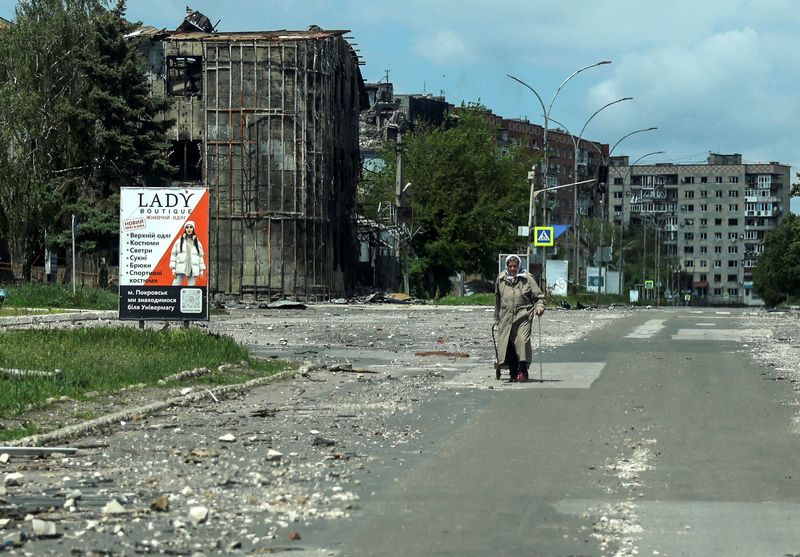
Defense stocks are under intense scrutiny as the Ukraine conflict continues to shape global investor sentiment and market volatility. The ongoing geopolitical event is a significant driver for the defense sector, with trading volumes exceeding daily averages, indicating heightened investor interest as of market close on October 25, 2025. This instability directly impacts supply chains and commodity prices, affecting corporate earnings and stock valuations. Defense sector ETFs show a steady upward trend, with key metrics like backlog orders and revenue growth anticipated to remain robust.
For investors, this geopolitical climate presents both challenges and opportunities. Understanding the correlation between military activity and market movements is crucial for navigating the sector. The amplified demand for defense capabilities, driven by global flashpoints, suggests a sustained focus on national security spending by allied nations.
As of market close today, October 25, 2025, defense sector ETFs have seen a notable upward trend. Key metrics such as projected revenue growth and order backlogs are expected to remain strong, contingent on sustained geopolitical tensions. Investors should closely monitor shifts in global defense budgets.
This analysis delves into the financial repercussions and provides a crucial 2025 outlook for defense stocks.
Expert Market Analysis
The global defense sector is navigating a complex landscape, heavily influenced by the protracted conflict in Ukraine. Historically, periods of heightened geopolitical tension and military activity have led to increased volatility within equity markets, particularly impacting the defense and aerospace industries. Current trends suggest a sustained and amplified global demand for advanced defense capabilities, directly benefiting companies involved in military hardware, cybersecurity, and logistics. This geopolitical backdrop, marked by strategic regional escalations, portends a period of prolonged market uncertainty and a reinforced emphasis on national security spending across allied nations, setting a cautious yet potentially rewarding stage for defense stocks in the upcoming 2025 fiscal year. This environment mirrors previous geopolitical flashpoints that have historically bolstered defense contractor performance.
From a fundamental perspective, increased global defense spending translates directly into higher order books for companies within the defense ecosystem. While precise financial metrics for direct combatants are often obscured, the secondary effects are readily observable. Companies based in NATO member states, for example, are strategically positioned to experience a significant uplift in their order backlogs. Analysis of defense sector ETFs indicates a consistent upward trajectory over the past year, with many outperforming broader market indices. Key financial indicators such as projected revenue growth and order backlog are anticipated to remain robust, though contingent upon the persistence of geopolitical tensions. Investors are advised to closely monitor shifts in government defense budgets and the allocation of resources towards cutting-edge military technologies. Metrics like projected revenue growth and order backlog are paramount for these entities, with EBITDA margins demonstrating notable resilience.
The impact on various defense contractors exhibits differing levels of exposure and benefit, depending on their specific product portfolios and market focus. Leading global entities such as Lockheed Martin (LMT), BAE Systems (BA.), and Raytheon Technologies (RTX) have historically demonstrated an ability to leverage periods of heightened global insecurity to bolster sales. Their established market dominance in critical defense segments, including fighter jets, advanced missile defense systems, and sophisticated electronic warfare capabilities, positions them favorably to capitalize on augmented demand. However, the precise financial outcomes for individual companies can fluctuate based on their product mix, geographic market penetration, and reliance on specific government contracts. Furthermore, evolving regulatory environments and stringent export controls play a pivotal role in determining the full extent of potential gains, influencing their market share relative to competitors in the current geopolitical climate.
The expert consensus for both retail and institutional investors points towards a cautious optimism regarding the defense sector’s outlook for 2025. While the immediate trajectory appears favorable due to escalating international conflicts, investors must remain acutely aware of potential policy shifts, the prospects of peace negotiations, and the inherent cyclical nature of defense procurement cycles. Key risks include the potential for overvaluation in certain defense stocks and the possibility of sudden geopolitical de-escalations. Conversely, significant opportunities lie in identifying companies characterized by robust technological innovation, diversified product lines, and resilient supply chains. Critical events to monitor include upcoming earnings calls for major defense contractors and official pronouncements from international bodies or governments concerning defense policy. Strategic entry points should be carefully evaluated, potentially focusing on companies with solid fundamental profiles and long-term contracts that offer stability amidst market volatility.
Related Topics:
Defense Stocks 2025, Ukraine Conflict Analysis, Geopolitical Risk Defense, Defense Sector Outlook, Global Market Volatility, Lockheed Martin Stock, BAE Systems Analysis, Raytheon Technologies Outlook, National Security Spending

